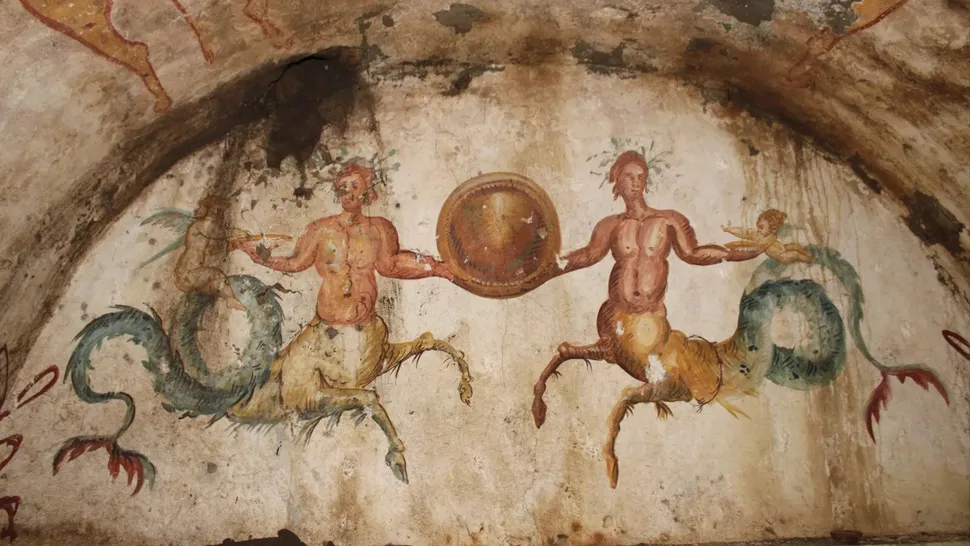Archaeologists in Italy have uncovered a 2,200-year-old tomb depicting two unusual mythical creatures: a pair of ichthyocentaurs, or sea centaurs, with the head and body of a human, the lower body of a horse, and the tail of a fish.
While excavating for infrastructure near Naples, archaeologists found a hypogeum (a large tomb containing rooms or niches for the burial of several people) in excellent condition, the entrance of which was still covered with a slab.
The walls inside the tomb are decorated with numerous frescoes. The two ichthyocentaurs may be representations of Aphros and Bithos, a pair of mythological sea gods who personify the sea foam and the ocean abyss. Sea gods are often depicted wearing lobster-claw crowns, but on the wall of this tomb they reach towards each other to hold a large shield known as a clypeus. Two winged Cupid-like dolls complete the scene.
The tomb is also covered with painted wreaths and adorned with a striking image of Cerberus, the legendary three-headed dog guarding the Roman underworld, captured by the demigod Hercules in the last of his 12 labors. Nearby is the god Mercury, recognizable by his winged hat.
The tomb also includes an altar where family members can leave gifts for the dead, as well as funeral beds on which the deceased still lies.
In a statement translated by the superintendent of the Naples Metropolitan District, Superintendent Mariano Nuzzo said the feeling of discovering the tomb was indescribable and thanked archaeologists for their efforts to uncover and preserve information about the history of the Giuliano site. Giuliano, today a suburb about 7.5 miles (12 km) northwest of Naples, was in ancient times one of the smaller populated parts of Campania, a fertile region that included cities from Capua to Salerno.
Previous archaeological excavations in the Campi Flegrei volcanic region surrounding Giuliano had revealed a series of Roman-era tombs (both burials and cremations) excavated over four centuries, from the Republican to the Imperial period. Source













